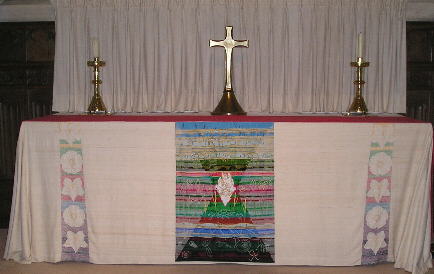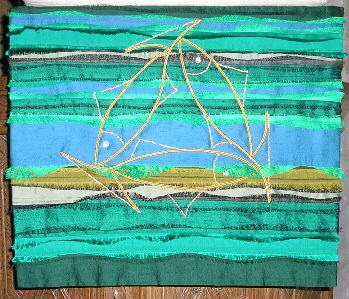
 |
Green may be thought to reflect God's act of
creation. The reaching down of his creating and making is more subtle
in this, for God is not only transcendent, but also immanent in the
world. He is not only outside it, but pours himself into it through his
Word. This presence of his Word in creation is indicated, where the
triangualr shapes overlap, by the four symbols
of the evangelists (right). |
 |
The background of this antependium is built up from a series of fringed bands of fabrics of many colours. The gradation represents a transition from dark colours (earth and water) through greens (the living world) to pale colours (the sky). On this background are outline motifs (below) that represent God's creation. Starting at the bottom there are fossils; then come primitive creatures such as jellyfish and a skeleton shrimp. Further up are fish and then, among the land creatures are a Southdown sheep and Timothy the tortoise, the symbol of Ringmer.
 Fossils |
 Southdown sheep |
 Timothy tortoise |
 Timothy grass |
 House Martin |
 |
The design of the green pupit fall
is a triangle formed by three fish which together symbolise
the Trinity - the majority of the Sundays of ordinary time are "Sundays
after Trinity" in the church's callendar. The fish is also an ancient
symbol for Christians - the letters in the Greek word for
fish being taken to mean "Jesus Christ, God". The background of this fall, like that of the antependium, is built up from strips of fringed cloth. |